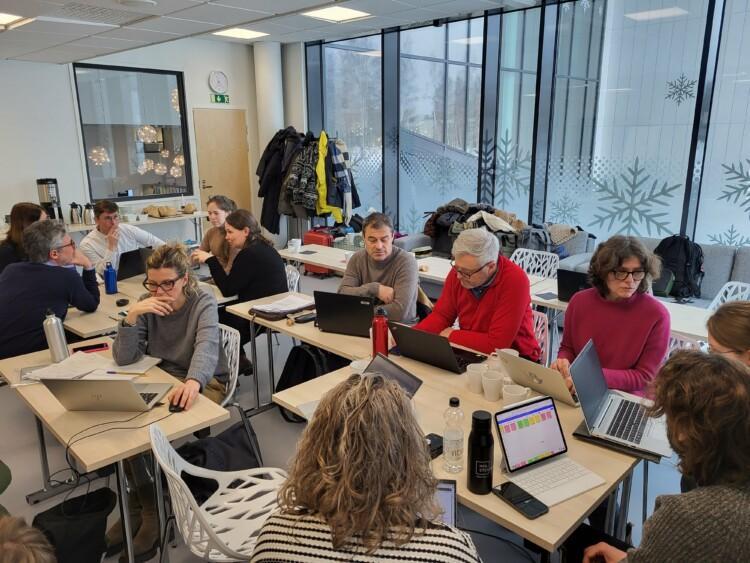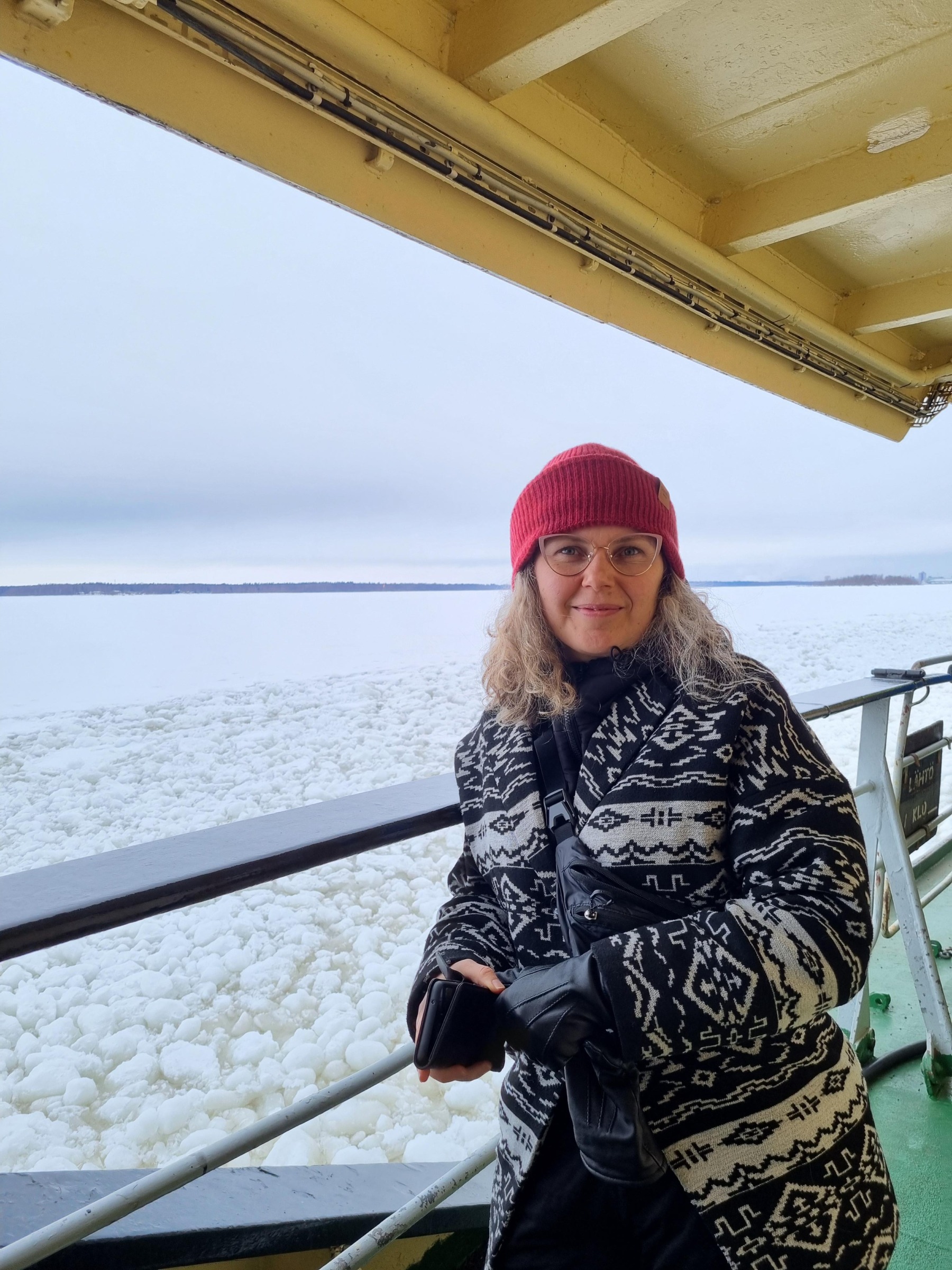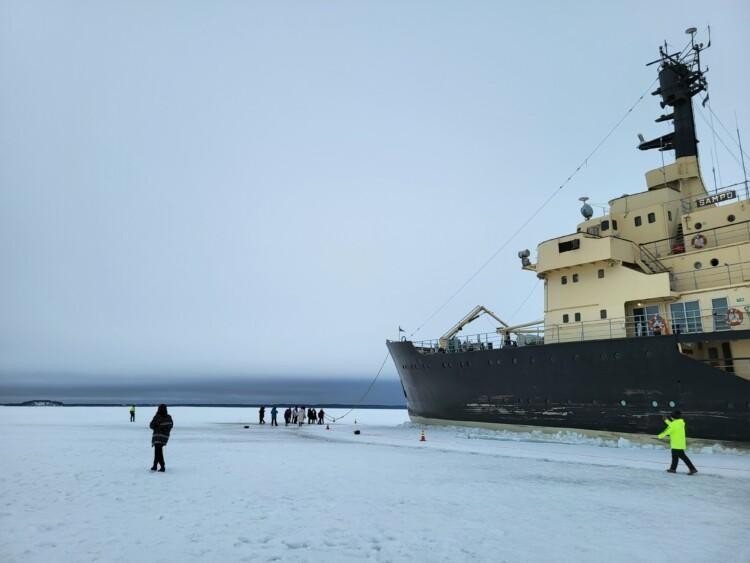Towards a green transition at sea with new maritime spatial planning actions
The objectives of the European Green Deal were again on the table when the international partners of MSP-GREEN project met in Kemi, 12-13 March 2024. Over the past year, the partners have identified gaps in the countries’ plans to address the objectives and have developed new actions to address them. During the two days of work, the guests hosted by the Finnish Coordination of Maritime Spatial Planning, also had the opportunity to learn about the specific characteristics of Finland’s northern marine areas and the winter conditions that set the framework for maritime spatial planning and different sectors.
The second MSP-GREEN workshop organized in Finland, held this time in Sea Lapland, focused on the analysis and further development of new marine spatial planning actions developed in the project. The project has reached a stage where the countries’ MSP plans have been analysed and key gaps have been identified in terms of taking into account the objectives of the European Green Deal. New actions are now being developed as a concrete step towards integrating Green Deal objectives into maritime spatial planning.

In Kemi, new measures were brought to the table to be worked on.
”Each of the project partners have identified opportunities to improve the capacity of their own country’s maritime spatial planning process to better take into account the European Green Deal through the new actions,” says Vesa Arki, project planner.
”The actions are a way to consiously guide maritime spatial planning to respond to certain objectives of the Green Deal. Now here in Kemi, we can further develop the actions, look at them as a whole and learn from each other’s experiences,” Arki adds.
The new actions developed in different countries approach the objectives from different angles. In Finland, two new maritime spatial planning actions have been identified and developed during the project. The first addresses the adaptability of the fishing industry to the challenges of climate change, thus responding in particular to the objective of sustainable marine food production. You can read more about the work done so far on this topic here.
The second Finnish action will contribute to the integration of marine multi-use into the maritime spatial planning process and will address several objectives as a cross-cutting theme supporting sustainable blue economy. For example, climate change mitigation as well as fair and just transition are among the objectives promoted by the action.
In addition, the challenges faced by maritime spatial planning in integrating the objectives of the Green Deal were discussed among the international group of experts. These challenges include lack of space and coordinating activities that may not be compatible, uncertainties related to policy making or changes over time, data constraints, as well as fair transition and comprehensive stakeholder engagement. The new actions now being developed can also contribute to overcoming these challenges.
Climate change and security of supply are topics of interest in Sea Lapland

During an icebreaker tour with the project partners in March, sea ice thickness off Kemi was over 60 cm. The photo shows Minttu Peuraniemi, marine spatial planner from the Regional Council of Lapland, on the deck of Sampo.
The visit to the winter landscapes of the Bothnian Sea also allowed the themes of the European Green Deal to be mirrored in the local context of Sea Lapland.
”The northern regions will face the strongest effects of climate change in Finland. This can be seen, for example, through changes in temperature and eutrophication,” says Minttu Peuraniemi, Maritime Spatial Planner at the Regional Council of Lapland.
”Average temperatures are rising rapidly in Lapland, which will require climate change adaptation both from marine nature and sectors,” Peuraniemi explains. ”For example, ice conditions will change considerably from what we are used to here.”
Areas with potential for offshore wind energy production in Finland’s maritime spatial plan have been identified especially in the Gulf of Bothnia.
”The objectives of the European Green Deal, such as mitigating climate change, will become a concrete reality in the Gulf of Bothnia with the energy transition. However, it should be remembered that the functionality of maritime transport, the safeguarding of ecosystem services and fair transition are just as important to be considered along the way,” Peuraniemi continues. ”For example, securing the spawning and feeding routes of migratory fish from the Baltic Sea to the Torneo River is one of the big issues here in the Bothnian Sea.”
A visit to the icebreaker Sampo provided an opportunity to take a concrete look at the features of the region that influence maritime spatial planning.
”Icebreakers are a key part of our maritime operating environment and a prerequisite for the functionality of the supply chain on the mainland as well. It is great to have international project partners as our guests and to show them the characteristics of our marine areas,” says Peuraniemi.

A tour on the Sampo icebreaker illustrated the challenges posed by thick sea ice.
MSP-GREEN’s work towards new maritime spatial planning actions and recommendations is progressing at an accelerating pace. Follow Finnish maritime spatial planning and MSP-GREEN on social media channels:
X (Twitter) @MSPGREEN22 and LinkedIn MSP – GREEN
The workshop was organised as part of the international MSP-GREEN project (2022-2024, European Maritime, Fisheries and Aquaculture Fund).




